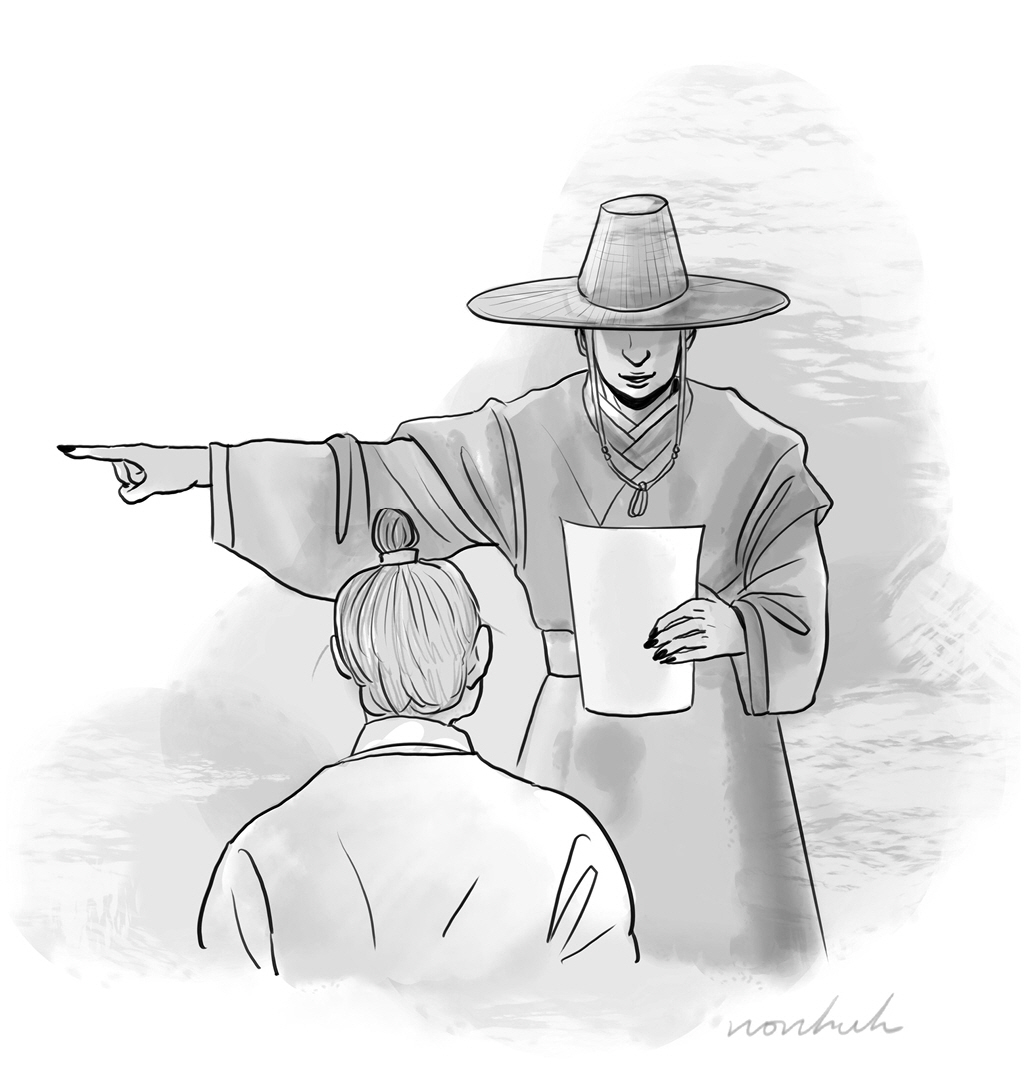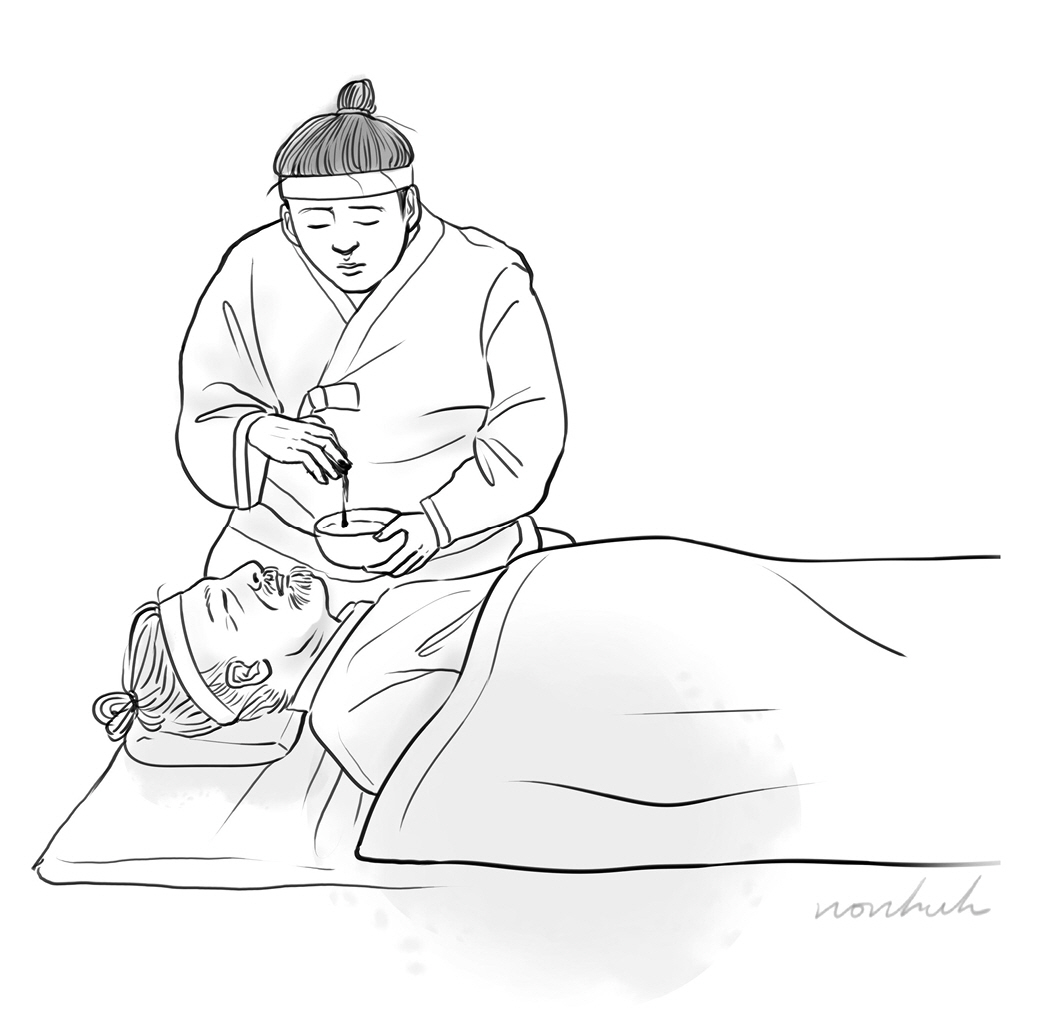Articles
- Page Path
- HOME > J Trauma Inj > Volume 36(2); 2023 > Article
-
Editorial
Near-death experiences in 19th century Korean tales -
Kun Hwang, MD1,2

-
Journal of Trauma and Injury 2023;36(2):75-77.
DOI: https://doi.org/10.20408/jti.2022.0020
Published online: August 5, 2022
- 2,367 Views
- 59 Download
1Department of Plastic Surgery, Armed Forces Capital Hospital, Seongnam, Korea
2Ewha Medical Academy, Ewha Womans University Medical Center, Seoul, Korea
- Correspondence to Kun Hwang, MD Department of Plastic Surgery, Armed Forces Capital Hospital, 81 Saemaeul-ro 177beon-gil, Bundang-gu, Seongnam 13574, Korea Tel: +82-31-725-6265 Email: jokerhg@naver.com
• Received: April 25, 2022 • Accepted: June 27, 2022
Copyright © 2023 The Korean Society of Traumatology
This is an Open Access article distributed under the terms of the Creative Commons Attribution Non-Commercial License (http://creativecommons.org/licenses/by-nc/4.0/) which permits unrestricted non-commercial use, distribution, and reproduction in any medium, provided the original work is properly cited.
- One day, Mr. Nam fell ill, and all medicines proved useless. His status became critical, and his caregiver began to prepare for his death. Everyone was startled and lost their heads. At dawn, the patient suddenly rolled in bed and sobbed and said, "It's strange." Everyone marveled and asked, "What is strange?" Mr. Nam asked for thin rice gruel, and the family prepared it. After taking two or three sips, he sat up and said, “Two messengers from the underworld took me to a government official of the underworld, stopped and left me outside the door, and went in. After a while, an official came out and asked me: 'Aren't you Mr. Nam living in Gyeongseong?' [. . .] He said, 'I am the grandfather of Mr. Shin, who lives in a village of Bongsan. In the dark underworld, I was deeply moved by the grace you showed to my grandson. There was no way to repay you because we were living in different worlds. Now your life has expired, and the angels of death were sent to take you. It is time to express my gratitude beyond the grave. A while ago, I lengthened the span of your life in my list of lifespans (Fig. 1). You are relieved now; go back.’ Immediately, he ordered the messengers to escort him. Owing to the late grandfather of Mr. Shin, I was brought back to life.” After that, he became especially kind to Mr. Shin [6].
Case 1. Tales from the Green Hills, book 4, chapter 9
- Jonghee alone was taking care of his sick father. He felt that his father was getting cold. Jonghee hurriedly boiled a thin rice gruel, made a stab wound in his fingers with a knife, and mixed the blood into the thin rice gruel. He opened his father’s mouth and poured the blood-mixed gruel into it (Fig. 2). After consuming half of the bowl, his father began to breathe again through the nose and mouth. After finishing the entire bowl, he was completely revived. Everyone in the family heard a voice saying: “Jonghee, heaven was touched by your devotion, and the underworld allowed your father to return.” The family members acknowledged that the voice was from Jonghee’s maternal grandfather, Yoon Kyum, who had passed away a long time ago. Jonghee’s father gradually recovered [6].
- In case 1, before the deceased arrived at the gates of the underworld and was tried before King Yama, the grandfather of an acquaintance, who was now an official of the underworld, extended the sick man’s lifespan to repay him for his kindness. Thereafter, he was able to return to this world again. This episode shows the Buddhist concept of causal retribution, known as karma.
- Case 2 portrays details scenes of a devoted son dripping blood from his fingers into a thin boiled rice gruel to save his sick father. In the background of the miraculous recovery of his father, we can note the Buddhist concepts of causality, Confucian recognition of the grace of his action by his maternal grandfather, and the way of heaven being touched by the son’s devotion and prolonging his father’s life [5].
- An NDE is a personal experience associated with impending death, encompassing multiple possible sensations, including detachment from the body, feelings of levitation, total serenity, security, warmth, and the presence of a light. In case 1, the patient experienced detachment from the body followed by returning. In case 2, the patient, as well as his family, heard the voice of their deceased ancestor, for whom they held Confucian memorial services [7].
- NDE is a fascinating phenomenon and some trauma victims experience during physical crises or periods of apparent clinical death. When trauma surgeons as well as critical care trauma nurses are familiar with the characteristics of the experience, medical personnel can assist trauma victims to understand available information about NDEs. Moreover, we are able to assist victims and their families to understand the meanings of the NDE and how it affects their lives [8].
- Tales from the Green Hills, published in the middle of the 19th century, is an excellent source for understanding the language and customs of the 18th and 19th century Joseon dynasty. Although it is not an official history, the above two cases are thought to be the oldest records of NDEs in Korea.
Case 2. Tales from the Green Hills, book 9, chapter 3
-
Conflicts of interest
The author has no conflicts of interest to declare.
-
Funding
This study was supported by a grant from National Research Foundation (NRF) of Korea (No. NRF-2020R1I1A2054761).
ARTICLE INFORMATION
Fig. 1.An official of the underworld lengthened the lifespan of Mr. Nam, who had just arrived at the gates of the underworld. Illustration by Hye Won Hu, MA.


Fig. 2.A devoted son is dripping blood from his fingers into a thin boiled rice gruel to save his sick father. Illustration by Hye Won Hu, MA.


- 1. Moody RA. Life after life. Mockingbird Books; 1976.
- 2. Hwang K. Keep playing tug-of-war against grim reaper. J Trauma Inj 2020;33:205–6. ArticlePDF
- 3. Ring K. Life at death. William Morrow & Co; 1982.
- 4. Ross EQ. On life after death. Celestial Arts; 2004.
- 5. Lee KO. Narrative characteristics of tales of returning from otherworld and their possibilities as texts for death meditation. Korean Lang Lit 2014;63:181–223. Article
- 6. Kim DW. Tales from the Green Hills. Gyomoon Publisher; 1996.
- 7. Koh YR. A short thinking on the revival stories written during the Edo era: comparing with the revival stories written during the late Joseon dynasty era. Korean J Japanol 2022;130:19–42. Article
- 8. Sommers MS. The near-death experience following multiple trauma. Crit Care Nurse 1994;14:62–6. ArticlePubMedPDF
REFERENCES
Figure & Data
References
Citations
Citations to this article as recorded by 

 KST
KST

 PubReader
PubReader ePub Link
ePub Link Cite
Cite



